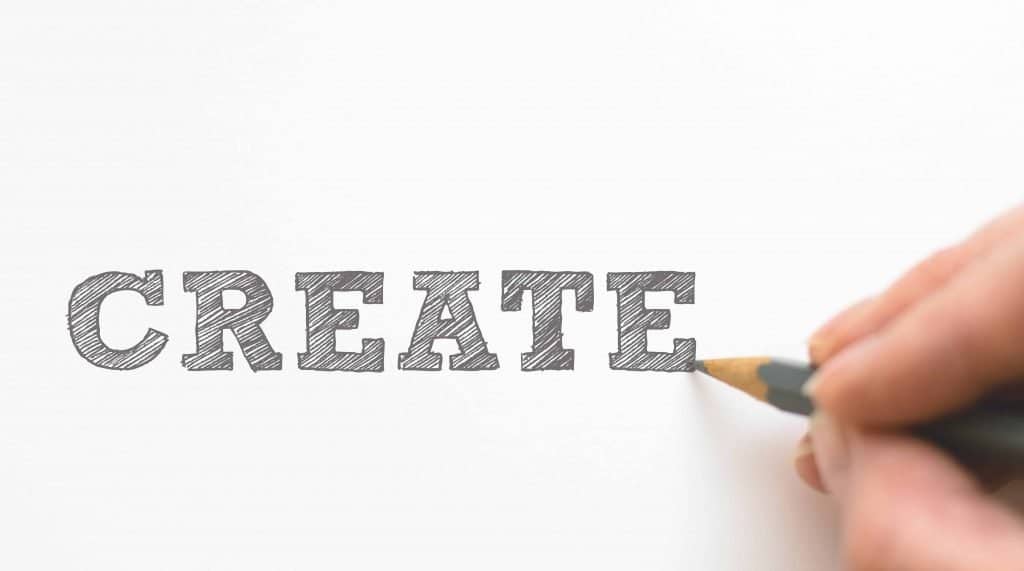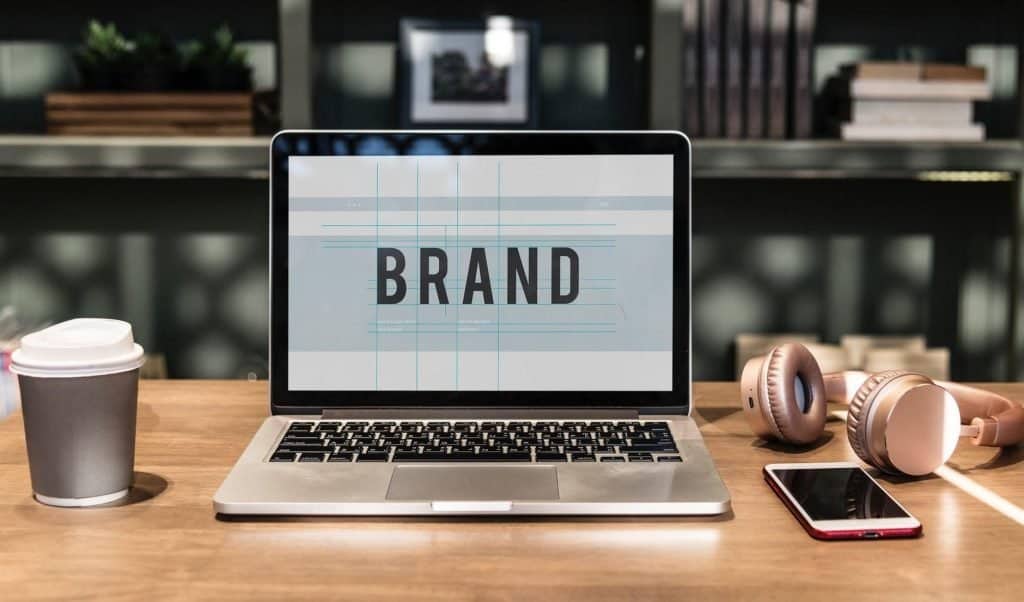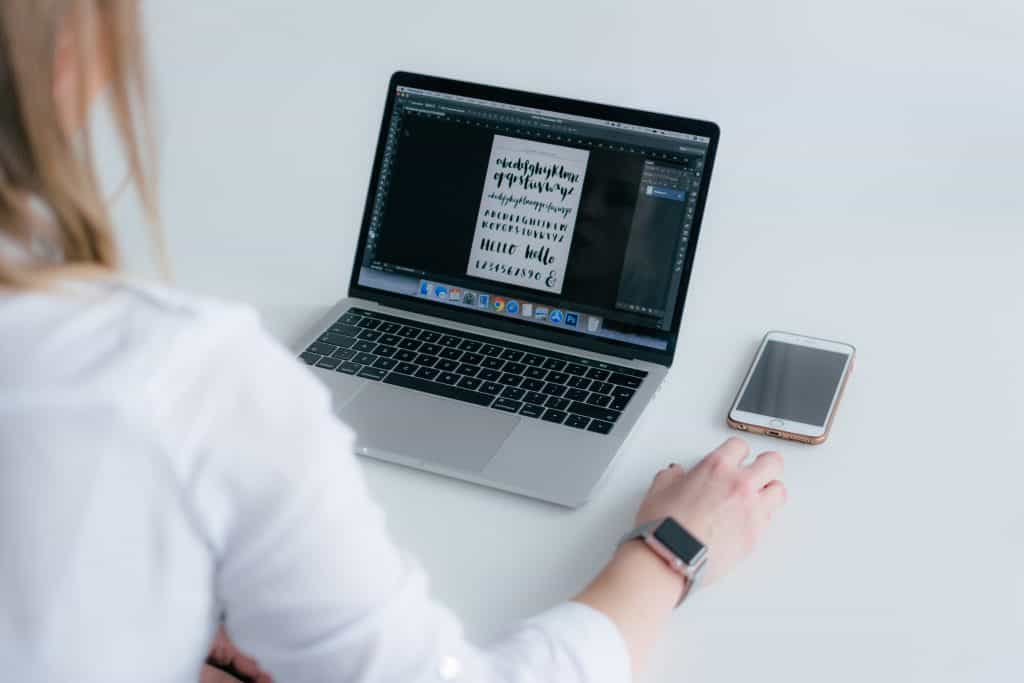Typography is what makes every creative design stand out. In fact, it can make or break your brand. That’s because it can call for attention, especially when wrapped with well-thought web design. No wonder there is no creative design agency that would make fun of choosing typography.
Depending on your #branding strategy, your choice of #typography can elicit happiness or fear, it can make your target #customers cringe, and it could come in as timid or loud. Click To TweetSimply put, typography can help make a strong first impression on people. Thus, there are a lot of factors to consider when choosing your typography. But before we delve into that, let’s familiarize ourselves more with what typography is.
What is Typography?
According to Practical Typography, “typography is the visual component of the written word.” Meaning, whenever a text is displayed on your computer monitor, on paper, or on a billboard, typography has a part in it.
The same thing goes when you are looking for resources on how to create a website. That’s because typography follows fundamental principles that can make your online content pop:
- Baseline: It is the invisible line on which a line of the text rests (basically the line under a text). It also helps specify the vertical distance between a text and another element.
- Cap Height: It is the height of a typeface (collection of letters) with flat capital letters like “M” or “I”. This is measured from the baseline. Also, keep in mind that every typeface has a unique cap-height.
- X-height: It is the height of the lowercase typeface. It is basically determined by the height of the lowercase “x”.
- Ascenders and Descenders: Ascenders are the upward vertical strokes, while descenders are the downward vertical strokes.
- Weight: It is basically the thickness of a letter’s stroke. Think light, regular, medium, bold. A typeface usually has four to six font weights.
How Typography Affects Web Design
According to strategic design and consulting studio iA, “web design is 95% typography.” After all, it can affect your website’s readability, usability and accessibility, and overall look.
Tampa web design is driven by powerful and compelling imagery, typography is still what holds an effective design together.
Sure, you used a beautiful color palette that best represents your brand’s personality. But if your content is hard to read, your color scheme is deemed useless.
Readability
One of the reasons typography exists is to encourage content readability. The size of an element (be it text or a button) determines its importance. So, the larger the text, the more important it is.
This is where visual hierarchy comes in. In fact, you will notice that landing pages have hero images and large texts. That’s because our minds tend to skim the page’s content and gravitate towards elements that stand out. So, when we see a large text, we (subconsciously) assume that it is an important web design element that we should focus on.
However, some factors can also impact a content’s readability, such as the typeface, font size, length, spacing, and column setting. Nevertheless, the key here is to make your content attractive and easy to read.
Usability
Typography also plays an essential role in improving your website’s usability. And what makes a content usable is when your typography flows seamlessly. Keep in mind that 80% of the information on the web is text. This means that you need to style your content properly.
Your typography should be able to draw your audience’s attention. In addition, they should be able to consume it from start to end with ease. So, typography can affect usability, depending on how you present a piece of information. Collaborating with a web design agency Chicago can help you refine typography choices that enhance both readability and aesthetic appeal. With professional insight, you can ensure that your content not only looks polished but also delivers a better user experience.
Consistent typography across the website is also essential. Meaning, you need to have a solid CSS.
When choosing typography, you should also consider how your audience read. You would be surprised to know that not everyone reads from left to right. Add to that the fact that language is also a factor when it comes to typography. What looks good in English does not necessarily mean the same for Arabic or Thai.
Regardless, your content’s text alignment will depend on what feels comfortable to your site visitors. You should also work on how letters are formed so your content can be recognizable by a specific set of audience that you are catering for. Doing so can help you enhance your website’s user experience (UX).
User Experience
Typography is instrumental in shaping a website’s visual communication. That’s because a website must be able to communicate its purpose.
Typography helps create a relationship between your website and your site visitors.
That’s because an intuitive and interactive website can help a site visitor achieve his specific goals. For instance, if you own an e-commerce site, your customers should be able to figure out how they can search for products, add it to cart, and then check out.
Aside from visual hierarchy, typography can have an impact on human psychology. It can enhance your site visitor’s responsiveness, which can have a positive effect on your engagement or conversion rate.
As Shahid Abbasi of Peerbits puts it, “Good looking typography with suitable fonts and sizes will lead to increasing and retaining user attention.”
Choosing the right font and displaying your content the right way can make or break your website’s UX.
Keep in mind that a great UX is not just about delivering high-quality content. It should be useful and in a usable format that can encourage consumption and interaction.
So when your content is unreadable, you are obstructing your website visitors’ experience. This can have a negative effect on your search engine optimization efforts.
How Typography Affects Your Brand
Have you ever encountered a business that was backlashed simply because it changed the font on its logo? Here’s the thing: Typography can help define how your branding will look both in print and online. Changing the fonts alone without proper research can have an impact on how the public will perceive your business.
For one, typography can affect how people read a text on your website. It can be difficult for them to read your blog post, for example, if the space between letters is too tight or too wide. And we are not just talking about a single letter here. How the entire word looks can make your brand unique.
As mentioned repeatedly in this post, a font can evoke various emotions. So, you would not use a cartoonish font if you want your customers to take your business seriously.
People also tend to associate typefaces with scenarios. Handwritten fonts come as unprofessional, serif fonts are formal, and sans-serif fonts have a clean and modern look. Thus, it is crucial that you also consider your industry when working on your typography.
Not to mention that it should look consistent across all channels. When the font on your logo does not read well on social media, for example, it can cause serious problems.
Understanding Brand Identity
Unlike branding (which is how you make your customers perceive your business), brand identity refers to visual collaterals that you associate your business with.
So, if you are branding your business as youthful and fun, your brand identity could be the use of bright and popping colors. However, your brand identity is not just limited to your color scheme and logo. Even your typography plays a big role in building your brand identity.
As Steven Douglas puts it, “Imagine, if you will, receiving a notification on your iPhone written in Comic Sans. Hilarious at first, then undeniably incongruous.”
Fonts have their personalities, and they can evoke various emotions. This means that you need to choose fonts that go inline with your branding and brand identity. Not to mention that it should be durable. Something that can help you visually communicate what your business is all about for at least a decade.
Imagine Coca-cola with a gothic typeface instead of its quintessential Spencerian script. We bet you will dissociate the brand with their logo. You would even think that the change in font might also mean a change in formulation.
Thus, typography does not only affect your brand identity. It can also affect your business’ bottom line.
Creating Your Brand Strategy
Sure, you can say that your business is “youthful and fun.” But do your customers think the same? No? Then you need to work on your branding strategy.
Brand strategy is how you proactively help the public to perceive your brand. This includes your mission, vision, and core values.
If you are a smart business owner, you know that you need to have a branding strategy. That’s because 87% of consumers purchase from a business simply because of their values.
Branding strategy does not only affect your sales and revenue. It can also make your business attractive to investors and possible collaborators.
So, how do you build an effective branding strategy? Here’s how:
- Look at how your business currently presents itself to the public. Do your values guide your actions? Are you doing what you said you are doing? Does your business exist for the right reasons?
- Align your brand identity with your mission, vision, and core values. This can also help you find your business’ unique selling proposition, as well as what brand assets to develop.
- Leverage marketing to communicate your brand identity. This means that your new brand identity should be present on your logo, blog posts, website design, social media content, email, packaging, and more.
Remember: Typography Matters
Typography is the unsung hero of a stunning design. It can evoke emotions while making a visual impact. Thus, the way to present your text content can influence your website visitors. It can influence how people perceive your site, therefore your brand and your business.
When utilized the right way, typography can give your website a distinct look, and it can impact your sales and revenue.
For those who are not professional designers, or for anyone looking to experiment with different typography styles efficiently, you can use a font generator. These tools allow you to quickly preview and select fonts that align with your brand’s personality and message, simplifying the process of finding the perfect typography for your website.






